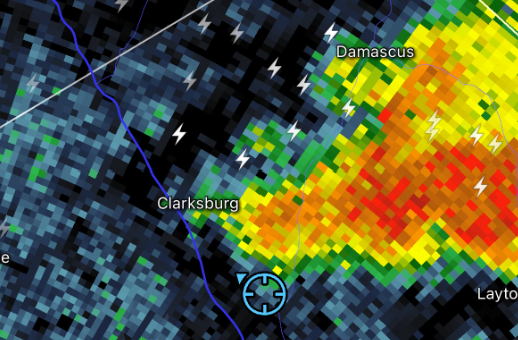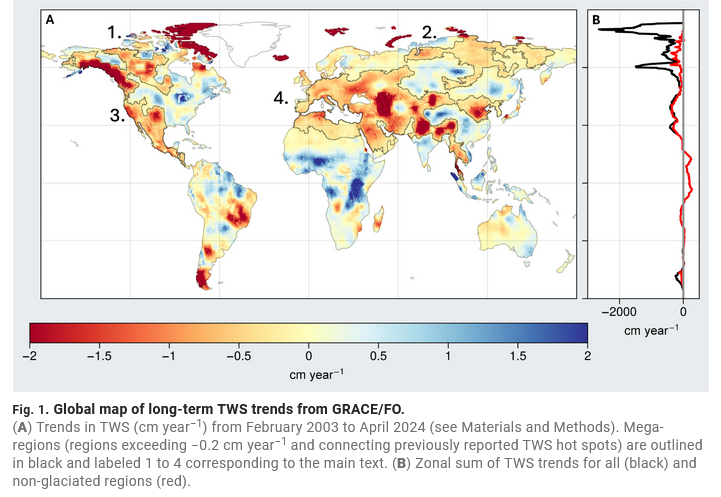All Activity
- Past hour
-
But that chart also assumes no large scale geoengineering projects will happen, which I don't think is true. Beginning in 2030 or maybe even before, we'll very likely see such projects to cool down the climate, humanity won't stand still and just let the climate warm like that.
-
Yes, the west has gotten hotter and drier while the east has gotten wetter and warmer (warmer refers to minimums while hotter refers to maximums). But in this context 1995 is when we switched to a +AMO
-
This is why I have been saying my thoughts about a cold-neutral may turn out to be wrong and we actually do see an official La Niña. Also, if you look at that subsurface signature, it’s definitely not arguing for an east-based event. Not saying it can’t change by the end of fall but that does not look like an east-based subsurface right now, (Nino 1+2 has been skewed warm for months) which may not really matter all that much if this -ENSO event stays weak…..
-

July 2025 Obs/Disco ... possible historic month for heat
RUNNAWAYICEBERG replied to Typhoon Tip's topic in New England
You can tell they are holding on to every drip of dew point. -
For us it was the 1990s.
-
Here was me again getting missed just to the north. SEVERE drought in progress here almost no rain since July 2
-
Bigger question is what kind of geoengineering can we do to cool the oceans back down, I envision a device that would overturn the oceanic circulation and constantly bring up cooler ocean waters from the depths. Yelling about reducing fossil fuels isn't going to do anything-- it's already too late for that-- humanity must actively start large scale geoengineering projects to reverse what's going on.
-
Sure bud
-
Me? Are you joking? The context I provided about that chart is 100% correct. The claim that this is the “23rd lowest percentage of 90 degree days” is 100% made-up BS.
-

July 2025 Obs/Disco ... possible historic month for heat
Damage In Tolland replied to Typhoon Tip's topic in New England
The three ACATT amigos very very worried. Uh-oh -
2025-2026 ENSO
TheClimateChanger replied to 40/70 Benchmark's topic in Weather Forecasting and Discussion
No, it’s not a legitimate trend. It doesn’t account for changing distribution of stations as I stated above. There are many more high elevation sites today that seldom or never reach 90F, so, of course the percentage of days at all sites will go down. That’s not even talking about the non-climatic biases that would have favored the older era. Maybe there were more, but that’s not the way to do that analysis. -

July 2025 Obs/Disco ... possible historic month for heat
Torch Tiger replied to Typhoon Tip's topic in New England
Its like whatever that bozo Morgarbage says, take the opposite and you'll be nearly 100% correct. -

July 2025 Obs/Disco ... possible historic month for heat
Torch Tiger replied to Typhoon Tip's topic in New England
-

July 2025 Obs/Disco ... possible historic month for heat
Torch Tiger replied to Typhoon Tip's topic in New England
AN on that cfs...but cfs sucks -

July 2025 Obs/Disco ... possible historic month for heat
Torch Tiger replied to Typhoon Tip's topic in New England
-

July 2025 Obs/Disco ... possible historic month for heat
kdxken replied to Typhoon Tip's topic in New England
-

July 2025 Obs/Disco ... possible historic month for heat
kdxken replied to Typhoon Tip's topic in New England
Pic ? -
Ban this dude
-
Abstract Changes in terrestrial water storage (TWS) are a critical indicator of freshwater availability. We use NASA GRACE/GRACE-FO data to show that the continents have undergone unprecedented TWS loss since 2002. Areas experiencing drying increased by twice the size of California annually, creating “mega-drying” regions across the Northern Hemisphere. While most of the world’s dry/wet areas continue to get drier/wetter, dry areas are now drying faster than wet areas are wetting. Changes in TWS are driven by high-latitude water losses, intense Central American/European droughts, and groundwater depletion, which accounts for 68% of TWS loss over non-glaciated continental regions. https://www.science.org/doi/10.1126/sciadv.adx0298
-

July 2025 Obs/Disco ... possible historic month for heat
Torch Tiger replied to Typhoon Tip's topic in New England
LR models are an inferno -
July 2025 Discussion-OBS - seasonable summer variability
winterwarlock replied to wdrag's topic in New York City Metro
That's a pretty solid 3 day heatwave next week -
Yeah, we were discussing this prospect a few weeks ago when this new paper was released. The authors have been interviewed about their findings since then. The shift to persistent 500mb ridging and SST warming across the mid-latitude Pacific may be an inherent response to a warming world which the research indicated occurred in previous warming eras for the earth. If we continue to see this block of warming and 500mb ridging continuing into the 2030s, then the new model simulation that was run could be onto something. Time will tell. https://insideclimatenews.org/news/18072025/southwestern-drought-likely-to-continue-through-2100/ But in this case, the phenomenon can last far longer than the usual 30-year cycle of the PDO. But if, as we hypothesize, this is a forced change in the sea surface temperatures in the North Pacific, this will be sustained into the future, and we need to start looking at this as a shift, instead of just the result of bad luck.” Todd was able analyze drought conditions during the mid-Holocene period 6,000 years ago, a period in Earth’s history when the Northern Pacific warmed and the Southwestern U.S. experienced hundreds of years of drought. That led to a warming of the North Pacific that was similar to the PDO that drives drought in the Southwest, but in this case, the drying lasted for centuries. “As soon as we saw that, you know, we started thinking about what’s happening today,” Todd said. Using an ensemble of historical and future climate models forecasting climate and precipitation patterns until 2100, they found the PDO-like negative phase continues through this century. But unlike the mid-Holocene period’s warming, which was brought on by vegetation change, today’s is driven by greenhouse gas emissions. Certain models revealed that the change in the ocean pattern was less about vegetation absorbing solar radiation, Todd said, and more about warming in general. In many ways, Richter said, what people are seeing on the ground is outpacing science.
-

July 2025 Obs/Disco ... possible historic month for heat
kdxken replied to Typhoon Tip's topic in New England
And just like that summer comes to a screeching halt. -

July 2025 Obs/Disco ... possible historic month for heat
kdxken replied to Typhoon Tip's topic in New England
Looks like it'll be safe to go back into the pool



.thumb.png.d36caaefd7cd4dfe0581ec522a1d4f90.png)




